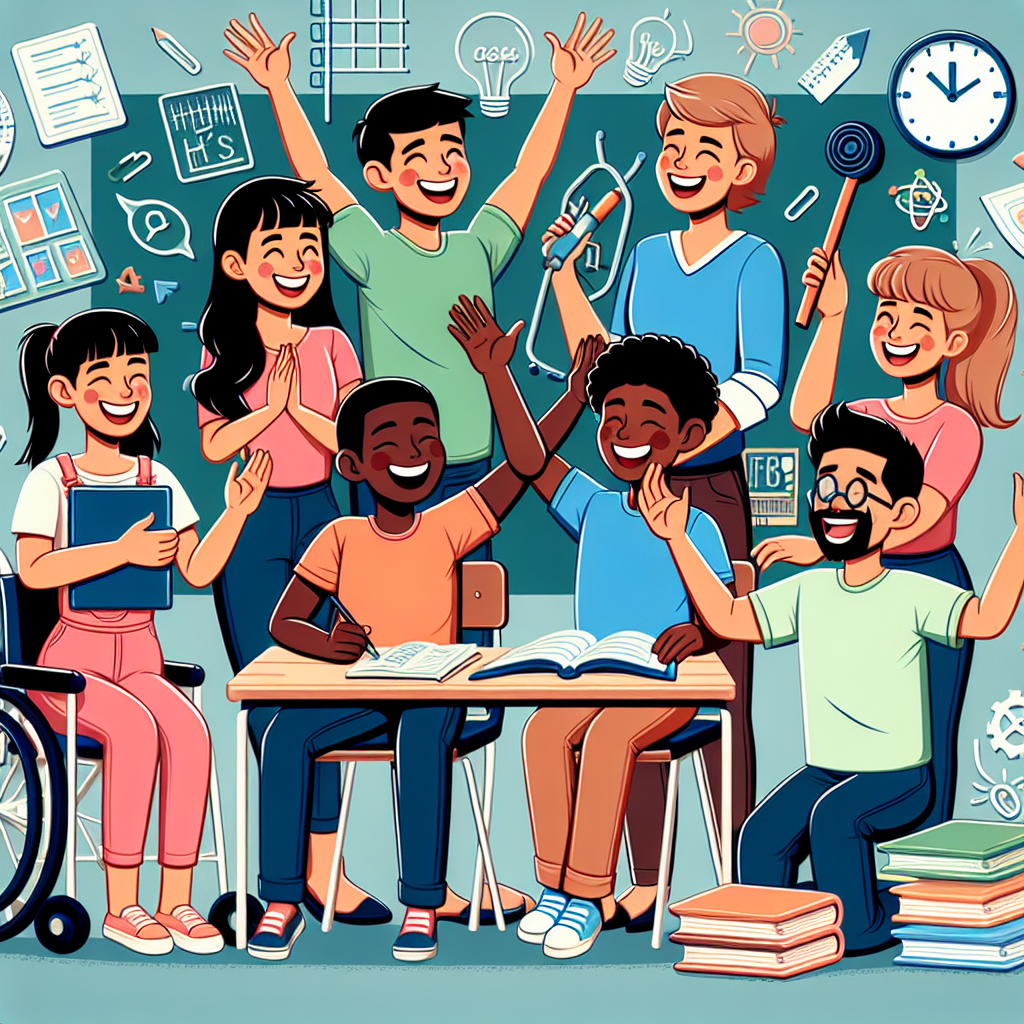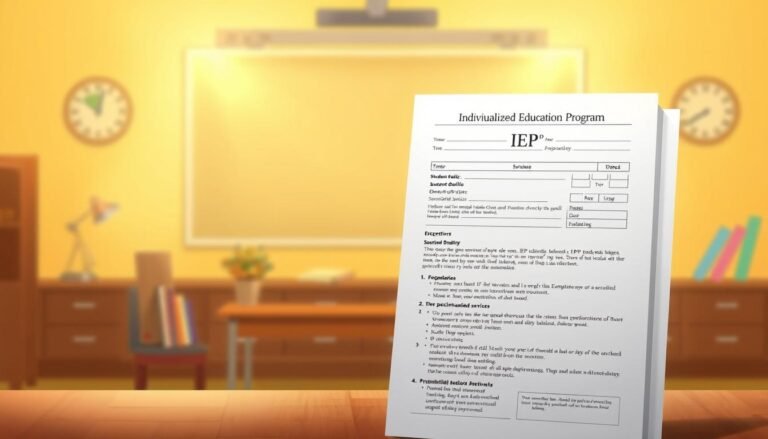
Education for All: Essential Best Practices in Accommodating Learning Disabilities in the Classroom
Introduction
In an increasingly diverse educational landscape, embracing all students—regardless of their learning challenges—is not just an ideal; it’s a necessity. Education for All: Best Practices in Accommodating Learning Disabilities in the Classroom has never been more vital. Approximately 1 in 5 students experiences some form of learning disability, and they deserve an equal opportunity to thrive academically. Imagine a classroom where every child can engage, learn, and contribute meaningfully. This article aims to guide educators in cultivating such an environment, replete with practical strategies and real-world applications.
Understanding Learning Disabilities
What Are Learning Disabilities?
Learning disabilities (LD) are a group of disorders that affect the brain’s ability to process information. This can manifest in various ways, including challenges with reading, writing, math, or social skills. Understanding these disabilities is fundamental for establishing effective strategies to accommodate students in the learning environment.
Importance of Early Identification
Identifying learning disabilities at an early age plays a crucial role in a child’s academic success. Early intervention can lead to tailored educational experiences that meet individual needs, making the topic of Education for All: Best Practices in Accommodating Learning Disabilities in the Classroom all the more significant. Early identification allows educators to implement customized teaching methods that align with a student’s unique learning style, ultimately fostering a supportive educational atmosphere.
Best Practices for Classroom Accommodation
1. Differentiated Instruction
Differentiated instruction involves tailoring teaching methods to meet individual student needs. This can be achieved through varying teaching styles, adapting content, or modifying assignments. For instance, a teacher might use visual aids for students struggling with reading comprehension while offering verbal explanations for those who learn better through listening.
Case Study: Ms. Johnson’s Classroom
In a case study, Ms. Johnson, a fourth-grade teacher, noted diverse learning needs in her classroom. By incorporating visual, auditory, and kinesthetic learning activities, she saw a substantial improvement in student engagement and comprehension. For Mrs. Johnson, applying Education for All: Best Practices in Accommodating Learning Disabilities in the Classroom resulted in a more inclusive environment and better learning outcomes.
2. Use of Assistive Technology
Integrating assistive technology into the classroom can remove barriers for students with learning disabilities. Tools such as text-to-speech software, audiobooks, and specialized apps can make learning more accessible.
Case Study: The Impact of Technology
At an urban middle school, educators implemented text-to-speech software in their curriculum. One student, Sam, who struggled with dyslexia, reported a newfound confidence in reading. By using digital resources, he was able to understand material at a level that matched his peers, exemplifying the ethos behind Education for All: Best Practices in Accommodating Learning Disabilities in the Classroom.
| Technology Type | Description | Benefits |
|---|---|---|
| Text-to-Speech | Reads text aloud | Supports reading comprehension |
| Speech Recognition | Converts spoken words into text | Aids writing for students with dysgraphia |
| Interactive Apps | Engaging platforms for skill practice | Makes learning enjoyable and stimulating |
3. Flexible Grouping
Creating varied group configurations can enhance collaboration and peer support. Grouping students by ability or learning style allows students to learn from one another. In mixed-ability groups, for instance, students with learning disabilities can benefit from peer explanations, while their stronger peers can reinforce their understanding by teaching concepts.
Case Study: Group Dynamics
In research conducted in a high school biology class, students with and without learning disabilities participated in cooperative learning groups. The study concluded that students with learning disabilities not only improved their understanding of complex concepts but also developed greater social skills, an essential aspect of Education for All: Best Practices in Accommodating Learning Disabilities in the Classroom.
4. Creating a Supportive Atmosphere
A positive classroom environment fosters confidence. This involves using affirming language, celebrating small victories, and creating a safe space for mistakes. When students feel supported and valued, they are more likely to participate actively.
Case Study: Building Relationships
Mr. Thompson, a special education teacher, focused on relationship-building in his classroom. By incorporating daily check-ins and using praise to encourage effort rather than results, he witnessed a shift in his students’ motivation and engagement levels.
5. Collaborating with Parents and Specialists
Involving parents and specialists ensures a well-rounded approach to meeting student needs. Regular communication with families can provide insights into students’ challenges and strengths, enhancing overall strategies in the classroom.
Case Study: Family Engagement
A case study at Willow Creek School highlighted the importance of parent-teacher communication. Faculty members established monthly meetings to discuss each child’s progress and to seek input from parents regarding home strategies. This collaboration enriched the learning experience and empowered families, proving that Education for All: Best Practices in Accommodating Learning Disabilities in the Classroom goes beyond the school environment.
Enhancing Teacher Awareness and Training
Investing in professional development equips educators with the tools necessary to support students effectively. Workshops on learning disabilities, inclusive educational practices, and sensitivity training can greatly enhance teacher competence and confidence.
Importance of Continuous Learning
Ongoing training also emphasizes the need for adaptation and flexibility in teaching methods. Educators should engage with current research and best practices to ensure they remain equipped to meet diverse student needs.
Case Study: Professional Development
At Riverside High School, a series of workshops on inclusive education allowed teachers to share successful strategies and develop a greater understanding of learning disabilities. As a result, teachers reported feeling more empowered and competent in implementing the Education for All: Best Practices in Accommodating Learning Disabilities in the Classroom.
Common Challenges and Solutions
Misconceptions about Learning Disabilities
Many educators possess misconceptions about learning disabilities, often assuming they indicate a lack of intelligence. It’s essential to debunk these myths to create a supportive learning environment.
Solution: Educational workshops can help illuminate the distinction between learning disabilities and intelligence, instilling empathy among staff.
Resistance to Change
Academics can sometimes resist implementing necessary changes.
Solution: Ongoing dialogue about the importance of inclusion and the proven benefits of accommodating learning disabilities can encourage innovation.
Lack of Resources
Budget constraints often impede efforts to provide necessary resources for students with learning disabilities.
Solution: Schools can seek grants, community partnerships, and fundraisers to acquire assistive technology and training.
Conclusion
Education for All: Best Practices in Accommodating Learning Disabilities in the Classroom requires commitment, compassion, and creativity. By understanding diverse learners, employing effective strategies, and building a supportive climate, educators can create a nurturing environment where every child has the opportunity to thrive.
Call to Action
Now is the time for educators, administrators, and communities to embrace the philosophy of Education for All. Every child has the potential to succeed, and by adopting best practices, including differentiated instruction, assistive technology, and parental involvement, we can ensure that no one is left behind. Join the movement toward more inclusive educational experiences today!
FAQs
1. What is a learning disability?
A learning disability is a neurological condition that affects an individual’s ability to process information, impacting their learning in specific areas such as reading, writing, and mathematics.
2. How can I identify if a student has a learning disability?
Key signs include consistent academic struggles, difficulty with reading or math, and challenges in organizational skills. Consultation with special education professionals can assist in the identification process.
3. What are some common types of learning disabilities?
Common types include dyslexia (reading difficulties), dyscalculia (math difficulties), and dysgraphia (writing difficulties).
4. What role does technology play in accommodating students with learning disabilities?
Technology serves as a powerful tool in providing alternative forms of access to information, enhancing engagement, and supporting personalized learning strategies.
5. How can parents support their children with learning disabilities?
Parents can develop structured routines, communicate regularly with teachers, and advocate for necessary accommodations in the classroom.
6. Why is professional development important for teachers regarding learning disabilities?
Training equips educators with the latest research and techniques, enhancing their ability to provide effective, inclusive education for all students.
By fostering a culture of understanding, flexibility, and support, we can ensure that every student, regardless of their learning challenges, has a fair and equal opportunity to succeed in their educational journey.
















